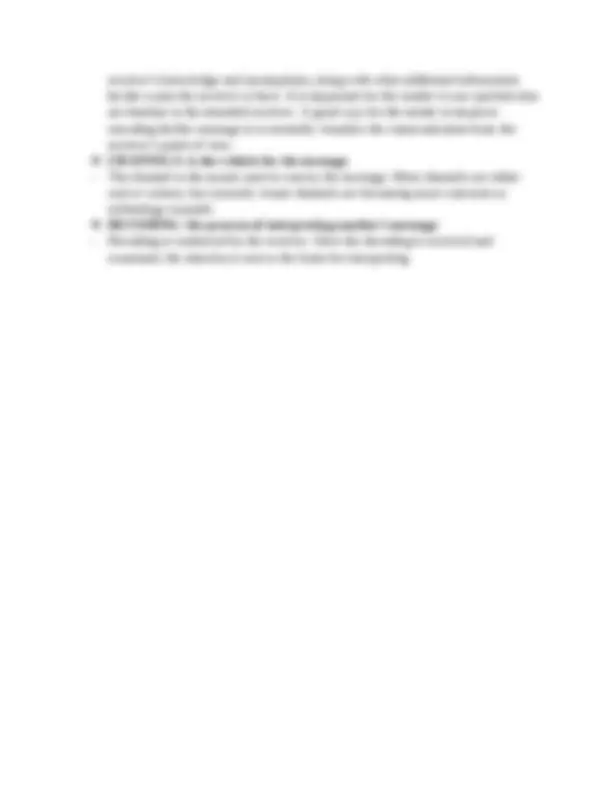



Study with the several resources on Docsity

Earn points by helping other students or get them with a premium plan


Prepare for your exams
Study with the several resources on Docsity

Earn points to download
Earn points by helping other students or get them with a premium plan
Community
Ask the community for help and clear up your study doubts
Discover the best universities in your country according to Docsity users
Free resources
Download our free guides on studying techniques, anxiety management strategies, and thesis advice from Docsity tutors
REVIEW KNOWLOEDGE ABOUT COMMUNICATION IN eNGLISH
Typology: Lab Reports
1 / 2

This page cannot be seen from the preview
Don't miss anything!


1.1. Definition
- Communication is the process of sending and receiving information among people. It is a way of reaching others by transmitting ideas and thoughts, feeling and values. 1.2. Communication process This process works as follows: the messenger has something to communicate, a message. This message has an intent. The messenger will encode his message with words, behaviour and body language that he senses will help him to best communicate this message according to his intent. The message will go through a channel, a means of communication such as e-mail, face to face or phone conversation, letter, presentation. The receiver will then decode the message using conventions, cultural or contextual background, and language skills. The message he receives might or might not meet the intent of the message. The SENDER
receiver’s knowledge and assumptions, along with what additional information he/she wants the receiver to have. It is important for the sender to use symbols that are familiar to the intended receiver. A good way for the sender to improve encoding his/her message is to mentally visualize the communication from the receiver’s point of view. CHANNELS: is the vehicle for the message